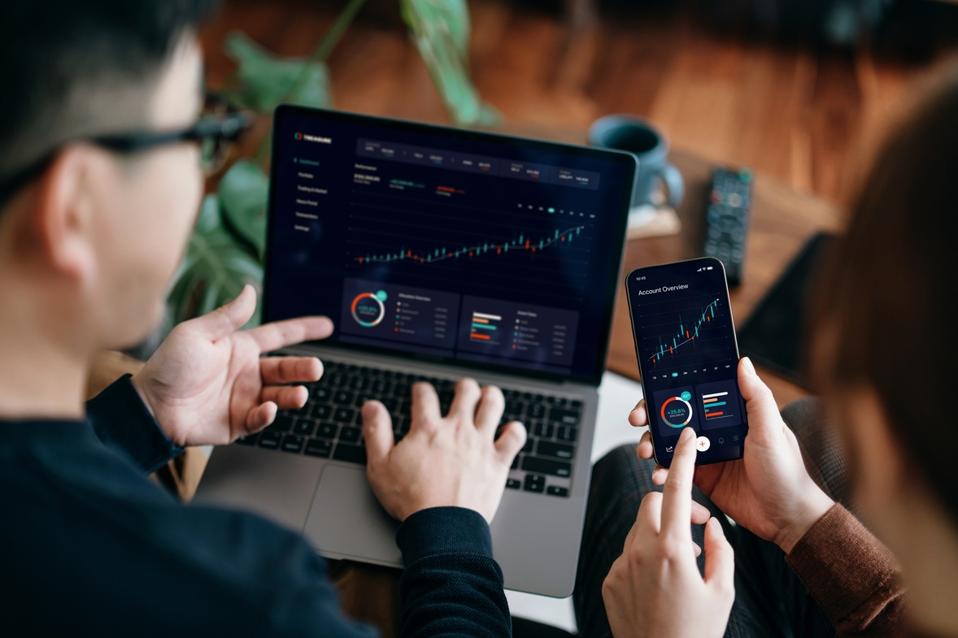Trent Hoerr is founder and CEO of BullRush.
We’ve seen the headlines all over the web, the ones that claim AI is taking over the workforce. No, it’s not science fiction. It’s not tomorrow’s worry. It’s already happening.
Developers, copywriters, designers and people in creative fields in general: All professionals who once thought their skills were “safe” are now watching automation quietly take over their turf. It’s not just factory lines anymore; AI is inside boardrooms, meeting rooms and analyst dashboards. And while some cheer on the efficiency, many are left wondering: What’s next for me?
As the founder of BullRush, I’ve watched the shift unfold firsthand. Video editors, marketers, UX designers and real people with real expertise are suddenly being outpaced by AI models that don’t sleep, don’t complain and don’t need health insurance.
And yet, something surprising is happening.
While AI is pushing people out of their lanes, some are finding new ground. Some industries are becoming even more human-centric, and there’s a lot to learn from their growth and trajectory. One key place I personally have seen embrace human workers is a place most would not expect: trading.
The Displacement Dilemma: When Good Isn’t Good Enough Anymore
Picture a hypothetical worker named Lila, who spent 10 years as a data analyst at a major tech firm. She’s methodical, sharp and a key player on her team. Then came the “upgrade”: AI dashboards that crunched numbers faster and offered “good enough” predictions at a fraction of the cost. Six months later, Lila was let go.
Or let’s look at Jake, a UX designer. He was once the go-to guy for clean wireframes and intuitive interfaces. Today? AI generates the whole layout. He’s just there to clean it up.
As expected from a machine, AI doesn’t knock politely. It rewrites the rules and slams the door shut behind it.
Trading: Where Human Instinct Still Beats The Machine
Let’s be clear: Yes, there are trading bots. Yes, algorithms can dominate Wall Street.
But here’s the truth that no one is preaching from the rooftops: Algorithms follow a strict set of rules. Humans, however, can read between the lines.
Contrary to popular belief, markets aren’t spreadsheets. They’re living, breathing reflections of fear, hope, greed and hesitation.
A bot can’t see the flicker of doubt in someone’s eyes during a press conference. It can’t feel the tension of a resistance level held by a hair or the subtle shift in momentum when retail investors start piling in late.
At my company, we’ve seen individuals across industries consistently outperform AI, not by out-coding it, but by out-thinking and out-feeling it. They bring intuition, pattern recognition and emotional intelligence to the table, knowing not just what to do, but when to act—and when to hold back.
A Closer Look At Trading
Here’s the irony: The very systems replacing traditional jobs are also fueling new opportunities for traders.
AI trading bots create predictable patterns. Automated headlines lead to predictable overreactions. The emotional swings of human traders trying to “keep up” with machines? Predictable, too. You don’t need to fight the machine. You just need to understand how the machine behaves and how the surrounding humans react. That’s where the real edge lies. And that edge is yours.
You can apply this mindset to any industry currently faced with AI’s seeming takeover, but I’ve personally found that these key practices are particularly effective in the trading space.
How Professionals Can Apply This Right Now
If your career feels like it’s on shaky ground, here’s how to start building a safety net:
• Educate yourself. Learn how AI operates in your space and learn how to operate alongside it. For trading, this means starting small. Pick one market. Learn the basics of price action, support/resistance and trend analysis.
• Practice without risk first. Let yourself practice in a low-stakes arena. In trading, this means using trading simulators to test your decision-making under real market conditions without putting capital at risk.
• Build daily habits. Practice your approach. In trading, this means treating trading like a skill, not a lottery ticket. Consistency beats intensity. Thirty minutes a day reviewing charts is enough to start.
• Integrate your strengths. Are you analytical? Use that to master strategy. Creative? Visualize setups. A teacher? Turn your process into repeatable routines.
Trading isn’t about becoming a market wizard overnight. The same can be said about other industries. It’s about developing an edge AI can’t replicate: human intuition, emotional control and adaptability.
In A World Of Machines, Be Human
When the bots come for your job, you have two choices: panic or pivot.
Trading, for example, offers a path that AI can’t fully automate, because it’s built on something machines can’t truly replicate: human judgment under uncertainty.
We live in a world of fast decisions, ever-faster technologies and constantly shifting ground. In this environment, the ability to adapt swiftly to challenges has never been more essential. But if you can learn to adapt fast, analyze everything around you, manage your risk and stay focused, you hold an edge—something no algorithm or bot can replicate.
Forbes Technology Council is an invitation-only community for world-class CIOs, CTOs and technology executives. Do I qualify?



